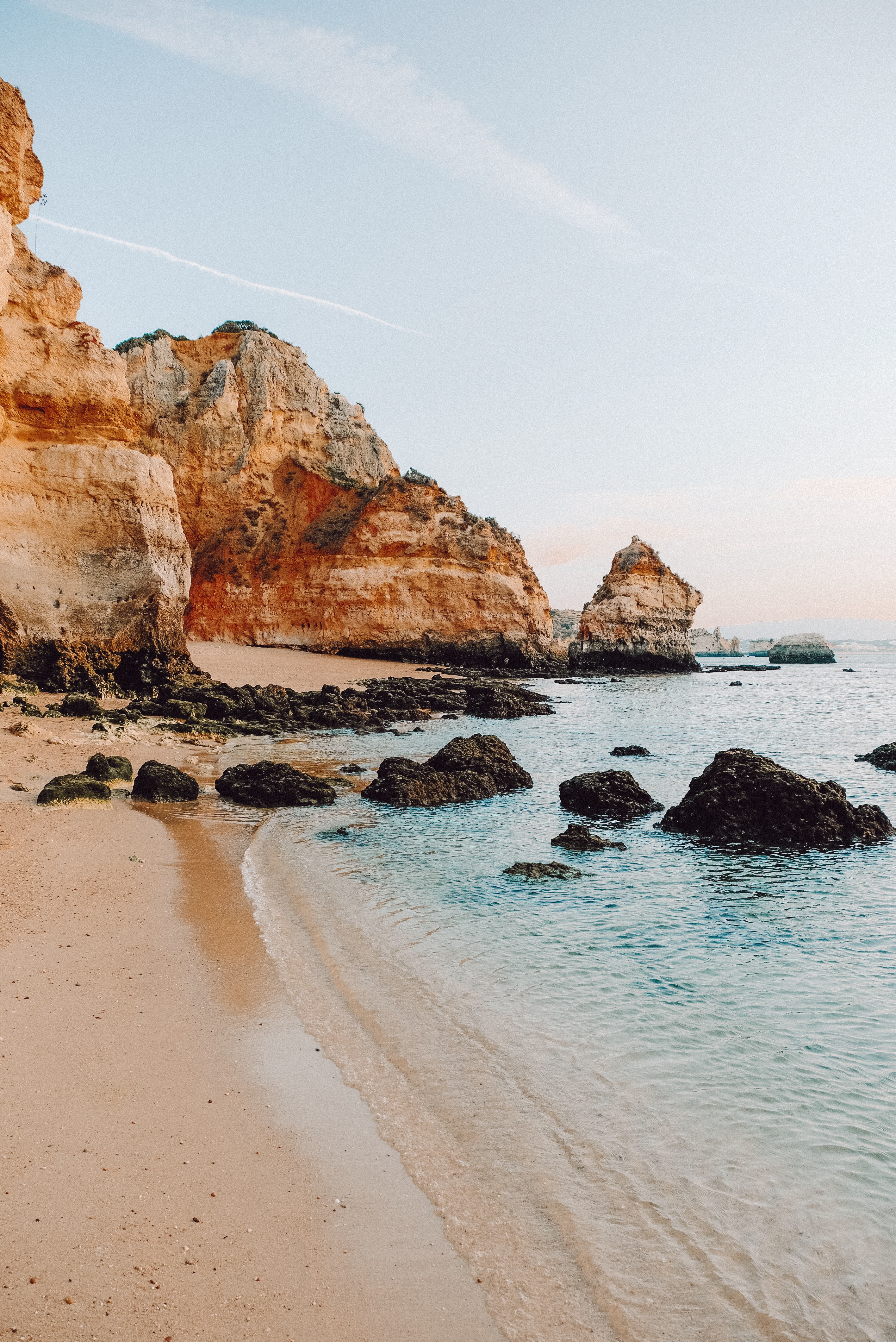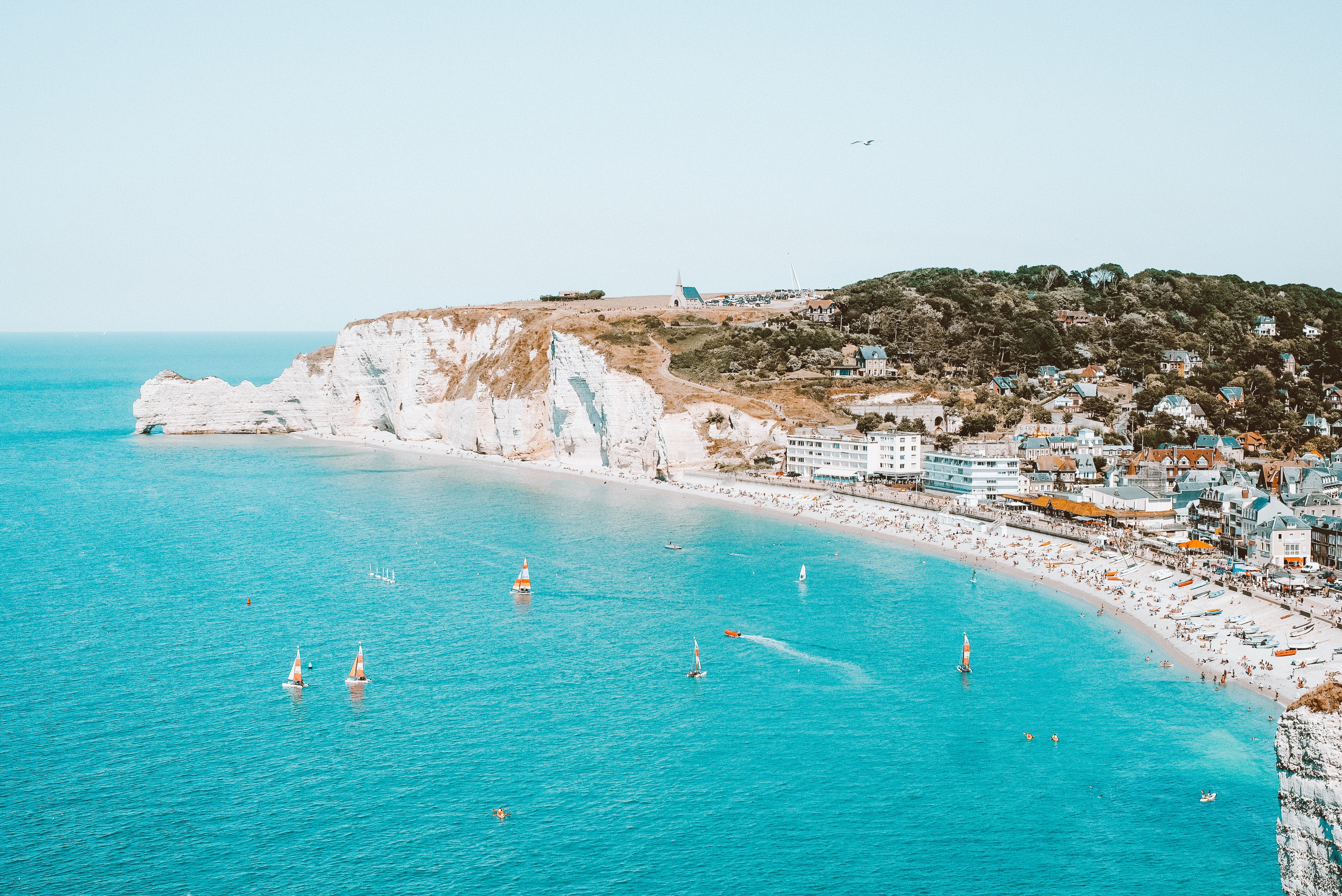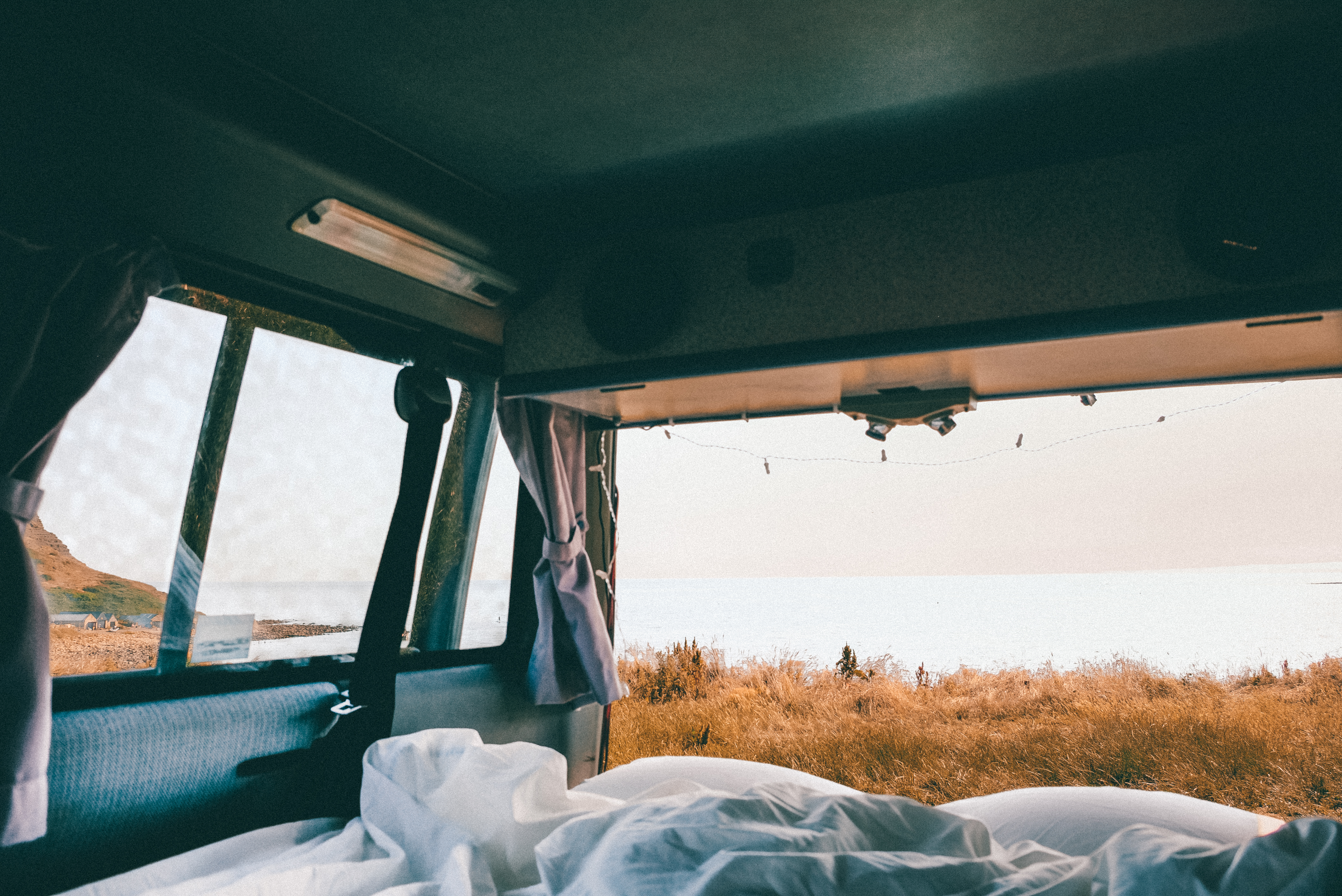
In reality, long-term travel has nothing to do with demographics – age, ideology, income – and everything to do with personal outlook…. Long-term travel isn’t an act of rebellion against society; it’s an act of common sense within society. Long-term travel doesn’t require a massive “bundle of cash”; it requires only that we walk through the world in a more deliberate way.
– ROLF POTTS
[Vagabonding: An Uncommon Guide to the Art of Long-Term World Travel]
So here it is. The first of a few posts to guide you through what we’ve learnt so far in preparing for and embarking upon a road trip in Europe.
I’ve decided to break it up across a few separate posts. Given the interest and questions I’ve received so far, there is just too much to fit into one post alone.
SLOW TRAVEL
In our final year of university, Tom and I decided we didn’t want to merely move through life checking boxes. Finish uni (check), get a job (check), get married (check), buy a house, fill the house with nice things… and then again, with even nicer things.
This isn’t to say these aren’t goals of ours, or that they aren’t a meaningful way to spend your life. But it was more a realisation that we wanted to be intentional with the decisions we made more than just moving through life on a path that is somewhat set out for you.
In the two years that followed, our plan was cemented. Tom’s career path meant that before he began the next stage of his medical training, we had a window. And we decided to pack up our lives and come travel… in a van… for 6 months.
For so long it seemed like such a far off, distant imagining that would never actually arrive. But we kept chipping away at our goal and made decisions to support it along the way, e.g. limiting other expensive overseas travel in light of more affordable getaways to Bali.
SO NOW, HERE WE ARE.
This concept of slow travel and long-term travel has definitely gained popularity in the last few years, I guess alongside the rise of social media. But before we go any further, I want you to know that this is absolutely achievable for anyone.
Don’t allow yourself to believe that this is only possible if you’re an influencer, or after winning the lottery, or “maybe one day…when I have/don’t have x”.
As the quote above said, it requires a change in outlook and moving through life and making choices in a more deliberate way.
WHY WE CHOSE TO TRAVEL THIS WAY
AFFORDABILITY
We chose to travel in a van, because let’s face it, its affordable. I couldn’t even estimate how much more money you would need if you needed to pay for accommodation and meals every day of the week. We have our kitchen, our bedroom, our home on wheels. But of course, it does mean giving up certain comforts in order to extend the time we can afford to travel (i.e. hot showers, a bathroom, personal space).
There is, however, a certain beauty in taking opportunities to live uncomfortably. To experience discomfort, and test what we really need. To make our regular life of comfort seem only the more sweet (and privileged). To appreciate the small, menial day-to-day things so many of us, so often take for granted.
FLEXIBILITY
Travelling in van also means you can travel more freely and with flexibility that is difficult to find in other forms of travel. I love waking up each day with no set plan, no place to be but wherever we want to go. To not worry about where we will stay each night, booking hotels, and trying my best to estimate how long I will or won’t want to stay in any one location.
LIVING WITH LESS
Before we left on this trip we had already begun the process of minimising our lives, being intentional with every purchase and everything we owned and selling or giving away everything else that didn’t make the cut. We spent time reflecting on what actually added value to our lives and increased our sense of wellbeing and ability to function in day to day life and what was just there…taking up space… either in a physical or mental capacity.
Taking our life on the road is just another experiment in “what do we actually need to survive?”. What do we need to be comfortable, satisfied and content in life? I’m not sure if it’s obvious at all, but I’m really trying to avoid using the word “happiness”, in its various forms, as I think our understanding of happiness has gotten a little lost. A meaningful, full life means experiencing the full breadth and depth of emotions, good and bad.
SAVING
So how does one save for this kind of holiday, and how much money do you actually need?
Well, for now we don’t know exactly, and we are a case study of one. But of course, we are not the only people out there who are doing/have done this so it’s’ definitely worth reading up on the budgeting aspect from different people, as how everyone chooses to spend their money varies greatly.
SPENDING
Before we talk savings, we need to talk spending.
I’m going to post soon talking in more detail around costs, ways of budgeting and managing your finances on the road. But in the meantime some things to consider when estimating your daily spending and hence how much money you will need to save for your holiday:
– Do you generally like to eat out a little or a lot?
– Are you going to stay in hotels/airbnb’s as well on your holiday?
– Do you like to experience places through specific tourist locations (given these generally cost money)
– Are you going to shop for souvenirs along the way?
Although there are a number of guides that can you give you a rough idea, how we travel is a highly personal experience. It’s definitely safer to overestimate how much money you think you will spend, as you don’t want to cut your trip short, miss opportunities or go into debt.
OUR SAVINGS PLAN
In a previous post [here] I’ve mentioned that everyone should read The Barefoot Investor [not sponsored at all, just a really, really great book]. Please note this is based on Australian financial institutions, however the guiding principles should still be incredibly helpful – you may just need to do your own research into equivalent banks etc.
The Barefoot Investor helped us simplify our money management and create an easy to follow savings plan. For anyone who has read the book, we did structure things a little differently given our primary goal was saving for this holiday. So we forewent saving for our future mortgage (for the time being), but did put some money aside for emergency funds, a few thousand dollars in hard to touch bank account.
The most important part of this plan is having a fixed amount or percentage that you set aside every pay check into savings.
I’m not going to recount the whole book for you here and again, I HIGHLY suggest you read it for yourself. It provides a super simple format to follow with very minimal and effort – but in essence there are a few steps you need to take.
1. Calculate your daily expenses – this is everything you need to survive day to day. The “need to” haves and regularly occurring expenses (food, rent, fuel, electricity, phone bills, internet).
2. Set an allocated amount of splurge money (this is entirely separately transactions account) – he recommends 10% of your weekly wage. This is guilt free spending money. But once it’s gone for the week, its gone. No top ups.
3. Savings – again, read the book, but for us personally, we religiously put aside a fixed amount of money from each pay check into our savings.
These exercises are incredibly valuable even if you choose not to stick to the whole plan. There is such power in having a clear picture of how you spend your money, and where you can cut out unnecessary spending (which is of course going to help you save more i.e. travel longer).
I just also want to mention that over the last few years, including the time we spent saving for this holiday, my husband Tom and I were both putting 10% of everything we earned aside to donate to effective charities [you can read more about why we do this here]
HOW MUCH DO YOU NEED TO SAVE?
This is our first time to Europe, so we didn’t have a clear picture of how much money we’d need, but could do our best guess using a few peoples blogs as a guide including Haylsaway and Hip Hikers.
Using these sites, and others as a guide. We estimated we would need around $20,000 left over after buying our van and flights to Europe.
At this stage we haven’t bought a return ticket home and have always been in the mindset of travelling until the money runs out, or we are ready to go home, ideally not needing to put any money on our credit card.
Initially we estimated we could live off $100 AUD/day on average. With some places spending more, others less.
To put this in perspective, In Sydney, when we were both working, our combined weekly living expenses was around $725 (which over $400 was rent alone). Here travelling, we are allowing ourselves around $1000 a week, but could easily live off $700 or less depending on certain variables (i.e. restricting eating out, bars, tourist sites, staying in campsites regularly). I’ll talk more about weekly budgeting in another post when I talk about life on the road.
In calculating how much money you might need here are some things to consider:
1. How long do you wish to travel for?
2. Estimate how much you will spend per day (using perhaps both your own experience and other references as a guide)
3. Add a buffer to that number (always better to over than underestimate how much money you’ll spend)
4. Buying a van will on average cost between $7,500 to $20,000 AUD depending on what type of van, how old it is and including other expenses like registration and insurance.
* NB you will get some of this money back when you sell the van at the end of your travels (don’t worry, a full post is coming about buying a van so stayed tuned).
5. Add another $2000 AUD minimum to set up the van once you arrive e.g. furnishings and getting the van mechanically serviced before hitting the road.
6. Add the cost of return flights
THE NITTY GRITTY
In terms of the nitty gritty, we can only speak from an Australian perspective. For this kind of road trip holiday you do not need a specific visa, but as with many other countries we are subject to the Schengen Agreement. This basically means that from the first day you set foot inside the countries that are part of this agreement [which is most of the EU] over the next 6 months, you can only spend a TOTAL of 90 days in these countries [approximately 3 months]
Unlike other countries i.e. America which resets if you leave the country for a day or so, this allowed timeframe DOES NOT reset until after the 6 months.
So what does this mean for your roadtrip if you wish to travel for longer than 3 months?
Good news! There are a number of neighbouring countries that are not included in the Schengen Agreement, and thus you can spend your other days there.
As of August 2018, these countries include:
– The UK – England, Wales, Scotland, Northern Ireland
– Republic of Ireland
– Several Balkan Countries – Croatia, Bosnia and Herzegovina, Montenegro, Serbia, Kosovo, Macedonia, Albania, Bulgaria, Romania & Turkey
– Eastern Europe – Russia, Ukraine, Belarus, Moldova
– Northern Africa – Morocco etc
For further details, and what will be your most up-to-date guide check it out here
SO WHAT DOES THIS MEAN?
Whilst the beauty of travelling in a van is having no set plans, or timeframes or anywhere to be and what time. This Schengen Agreement does necessitate some thought prior to your trip in regard to where you start, where you most want to go and what order you should travel in.
This, of course, aside from the obvious timing considerations of what time of year i.e. whether you want to hit the high season or just after to avoid some of the crowds.
STAY TUNED FOR MORE…
Obviously there are A LOT of things to consider when planning a holiday like this, and we will be sharing more of our experience and the practicalities around buying a van and life on the road. But I hope you found this first post helpful nonetheless and has maybe even inspired you to plan a trip of your own.




This is an awesome guide, Karissa. Can’t wait for the rest of your posts. My partner and I were just chatting about how we’d love to do this. Would love to know what other travellers/bloggers/Instagrammers you looked to for advice/guidance/reference. I will check out Haylsaway and hiphikers. x
I’m from Australia and currently travelling through Europe for 6 months also, so this is great!! But also with the Schengen Agreement, there are a few countries with bilateral agreements with Australia (like Germany, Italy and Holland) that you can stay longer than 90days in! They are all different agreements so check them, but I know I’m Germany your 90days resets every time you leave and come back as long as you’re not working there! Just in case you want to stay longer!!